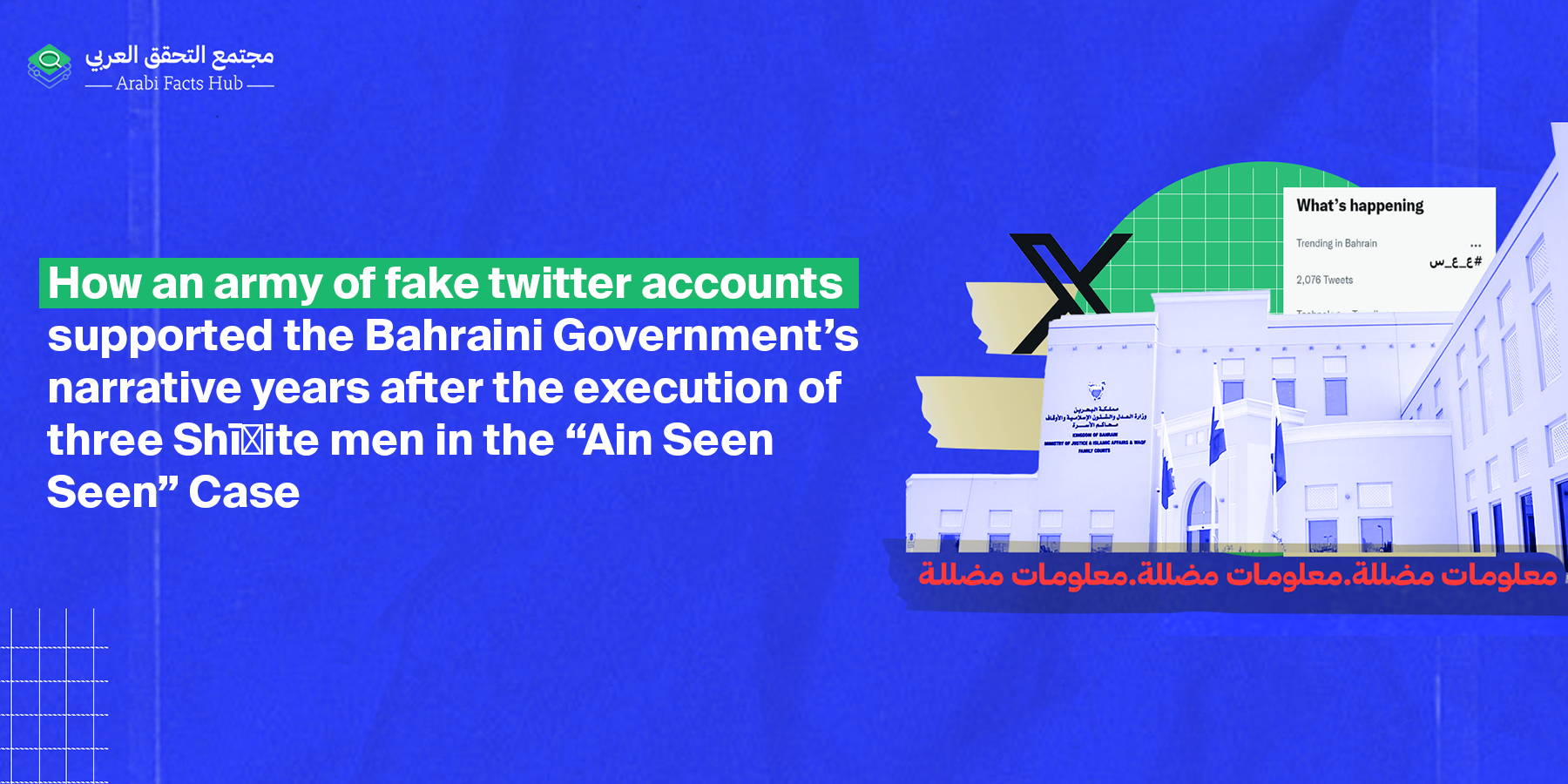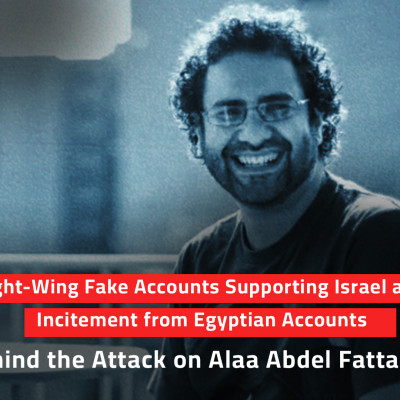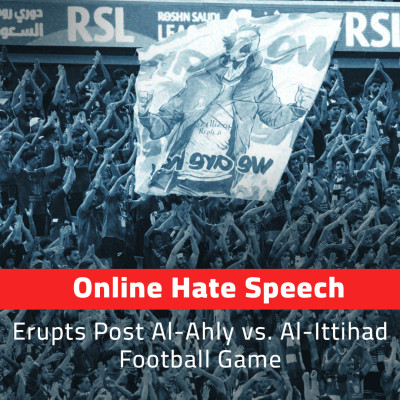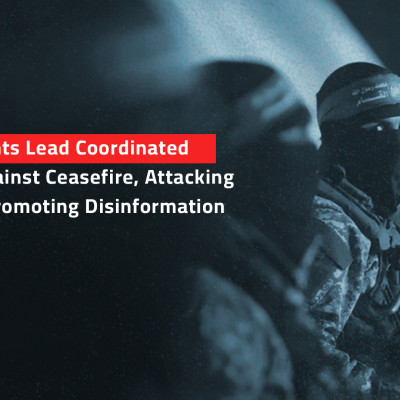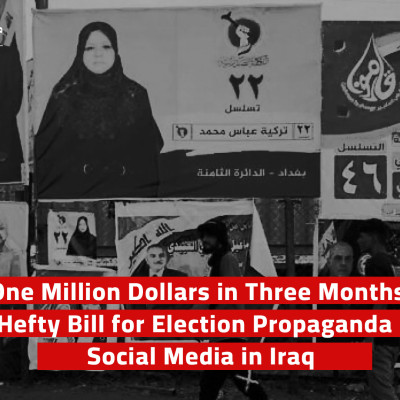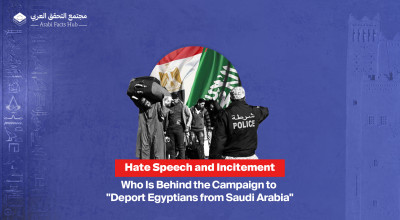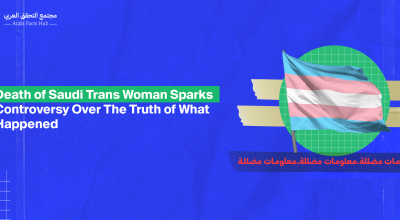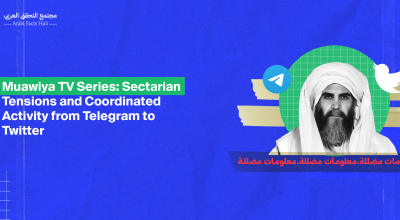| Bahrain | Scope |
| January | First launched |
| Political | Classification |
The case of Bahrain’s execution of three Shīʿite citizens resurfaced on Twitter six years after their death on 15 January 2017. Simultaneously, several fake accounts became active in support of the execution of those convicted in the killing of three policemen, one of whom was an Emirati national, in a bomb attack that took place in March 2014. The case is known among Bahraini Shīʿites as the “Ain Seen Seen“ case, in reference to the Arabic letter initials of the three men’s names: Abbas Al Samee’, Sami Mesheima’, and Ali Al Sankees.
In memory of the first execution to take place in Bahrain following the 2011 protests, several Shīʿites became active on the “Ain_Seen_Seen” hashtag to retell the story of the three convicted men. The hashtag quickly rose up the list of trending topics in the country, triggering a counter hashtag “Ain_Seen_Seen_Terrorist”, which adopted the Government’s position using a number of fake accounts.
Arabi Facts Hub has followed both hashtags, taking note of the nature of activity on these hashtags, the content being shared, and the most prominent tweeps using them.
Context:
Many call Bahrain’s 2011 uprising the forgotten revolution, where protests were quashed before they could gain sufficient traction or the same attention that other Arab uprisings enjoyed at the time according to human rights reports.
The uprising - the crackdown on which was achieved through the Gulf nations’ deployment of the Peninsula Shield Force - was part of a long string of protests demanding a constitutional monarchy and bigger representation for Shīʿites who form at least 60% of the population.
What Happened?
On 156 January 2017, a hashtag constituting the three Arabic letters “ع” (Ain) “س” (Seen) “س” (Seen) appeared for the first time one day following the execution of the three convicted men. Shīʿa political party Al-Wefaq National Islamic Society which led the 2011 protests, described the executions as extra judicial killings that were based on false grounds, according to Al Wefaq.
By the next morning of 15 January, the number of tweets on the hashtag had reached 2076, according to Twitter statistics, and it was the second on the list of trending topics which showed three GetDayTrends across Bahrain on the RushHour tool between the 15th and 17th of January, 2017.
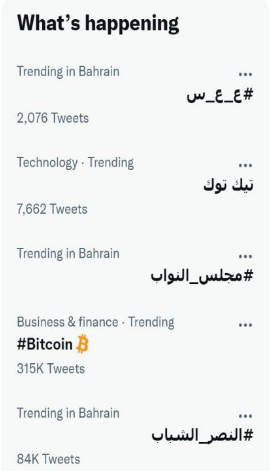
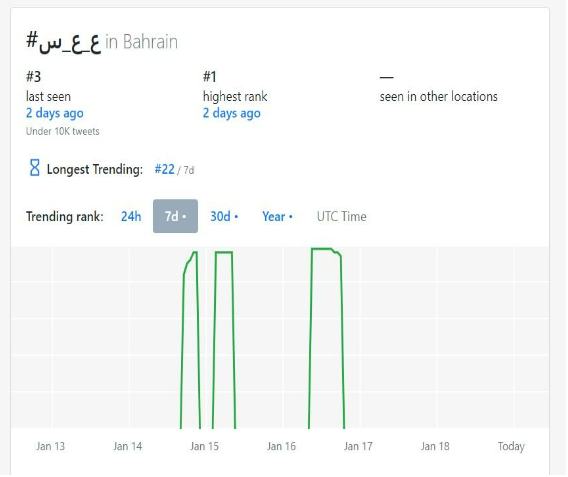
Accounts with a large following played a considerable role in the promulgation and promotion of the “Ain_Seen_Seen” hashtag. Some of those accounts had followers exceeding 200K, such as Al-Wefaq Society’s account (276K followers).
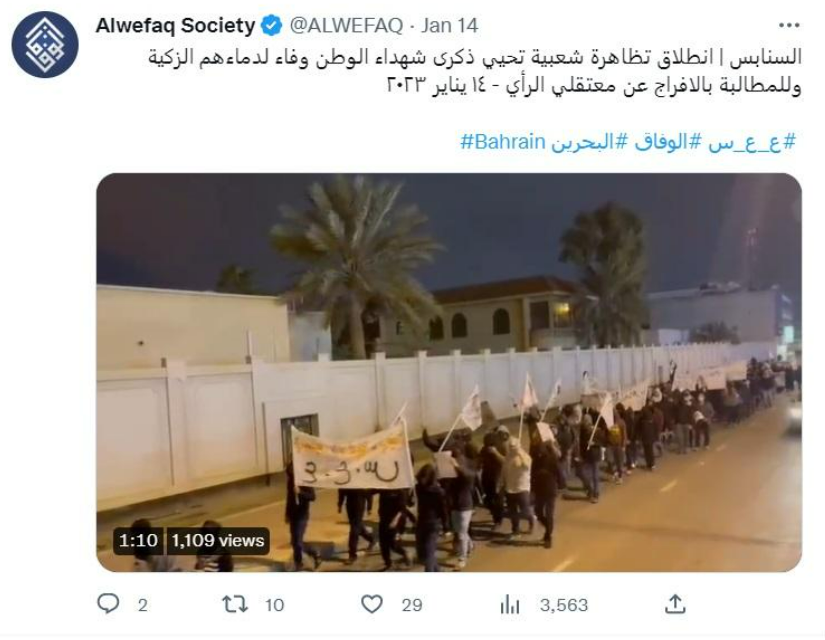
Among the most prominent promoters of the hashtag was Bahraini activist Ebtisam Alsaegh (28.8K followers). Alsaegh tweeted several photos and videos from an event that was held in memory of the three men. So did Director of Bahrain’s Human Rights Forum, Baqer Darwish (20.2K followers).
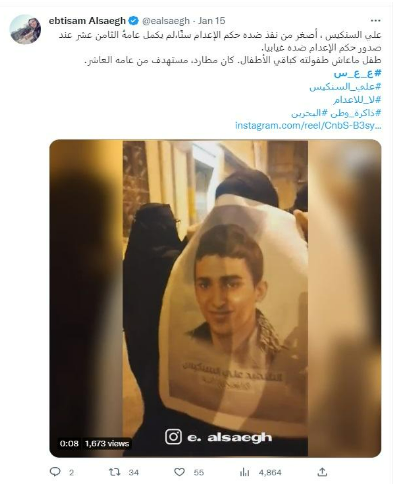
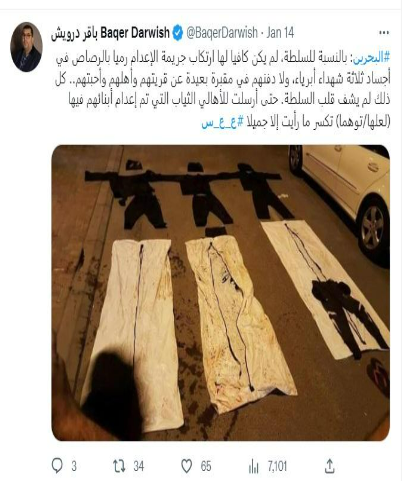
In addition to Alsaegh and Darwish, other noticeable accounts included the Sanabis Revolutionary Movement’s account (72.6K followers), and poet Alawi Alghuraifi (65K followers).
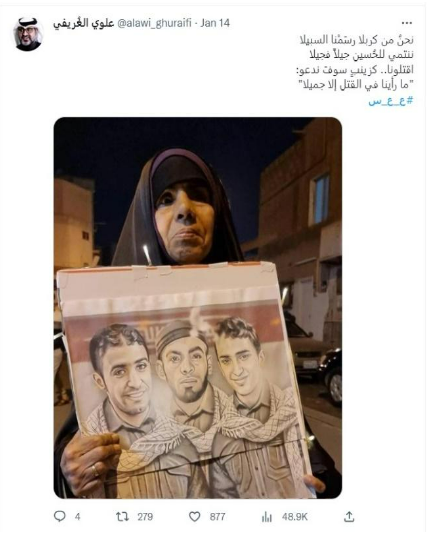

A retweeting army of Iranian, Iraqi, and Lebanese Accounts
The hashtag saw regional participation from outside of Bahrain. We noticed a number of Iraqi, Iranian, and Lebanese accounts, with similar content. All of these accounts tweet on Iran, Hezbollah, and the Popular Mobilization Forces (Al Hashd A-Sha’bi), with content that is popular among the Shīʿa Madhab.
The exact number of these types of accounts is inconclusive, but their activity was noticeable nonetheless. An example is Arabic speaking LuaLua TV, classified by Twitter as a “State media account - Iran”, despite the channel describing itself as the first independent Bahraini channel.

A number of accounts brandishing the Syrian, Iraqi, and Lebanese flags were also active. So were accounts with avatars/photos of the former Commander of the Iranian Quds Force, Qasem Soleimani, and Hazbollah’s Secretary General, Hassan Nasrallah, as can be seen in the tweet below. A careful look at the accounts that shared this tweet shows that some of them carry the “Retweet” symbol, indicating they might be bots. Their content includes tweets from accounts in the Arab countries listed above in addition to Yemen.
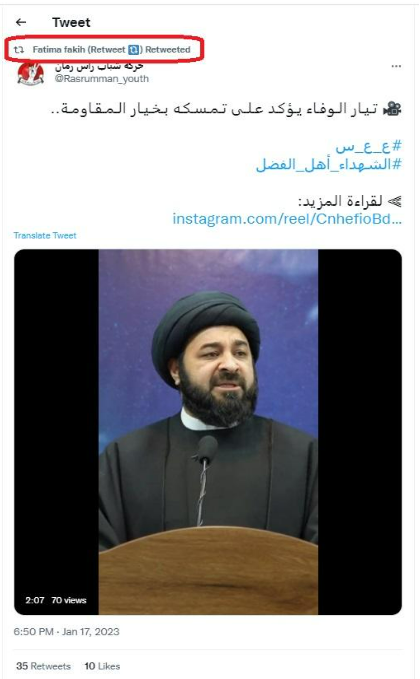


Some of the accounts on the hashtag were verified through the subscription based Twitter Blue feature, where users can pay $8 a month to receive the blue symbol.
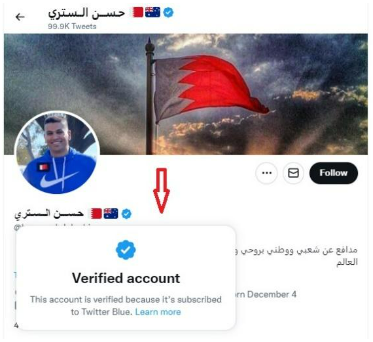

Disruption … # Ain_Seen_Seen_Terroirist
Hours after the launch of the hashtag for the first time, a similar hashtag appeared with the addition of the word “Terrorist” so that the hashtag reads “Ain_Seen_Seen_Terrorist”. The second hashtag reached the top of the trending topics list with 832 tweets, 2430 retweets, and 3385 through unauthentic activity, the most obvious indication of which was a retweet rate that was three times the original tweets.
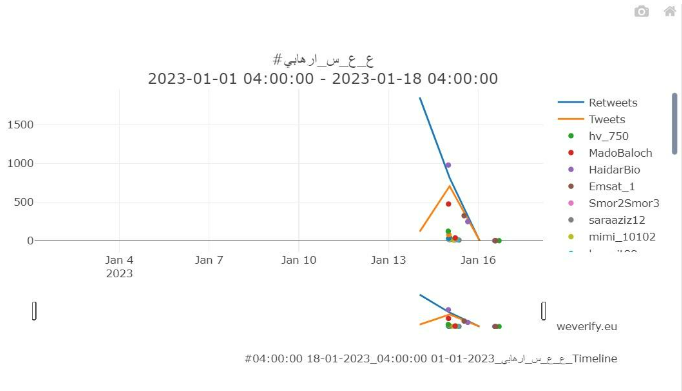
The hashtag is led by automated bots, and an analysis conducted by our team based on Gephi data shows that the majority of active accounts on this hashtag have some relationship with Saudi Arabia.
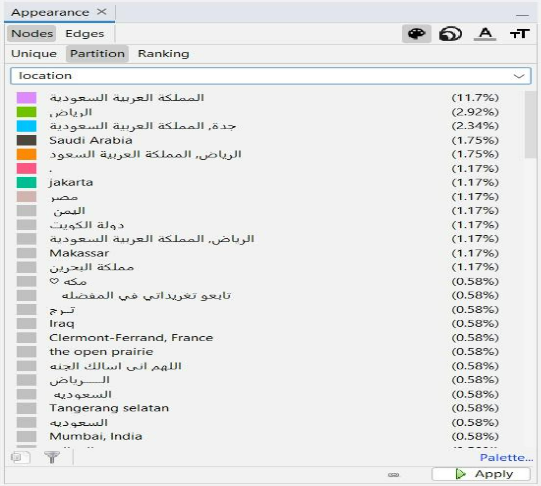
These accounts are active on several electronic campaigns, not all of which are necessarily political. Some tweets share content of commercial products or Saudi figures, as well as repetitive out of context or illegible content, as can be seen in the screenshots below.
Around the same time that the first hashtag and the countering hashtag were created, we noticed that these same accounts launched other hashtags similar in meaning to the original two. They employed the same phrases that were used to promote the countering hashtag, such as “AinAinAin_ Seen” and “Ain_Seen”, which raises suspicions that this was an attempt to distract from the original hashtag that was launched to defend the three men. This trick is common in the Arab region, where a hashtag is composed that looks like an original hashtag that was created in support of a certain cause, sometimes having the same name with a slight change of letters, in order to attract the attention of audiences to the fake hashtags and away from the original ones.
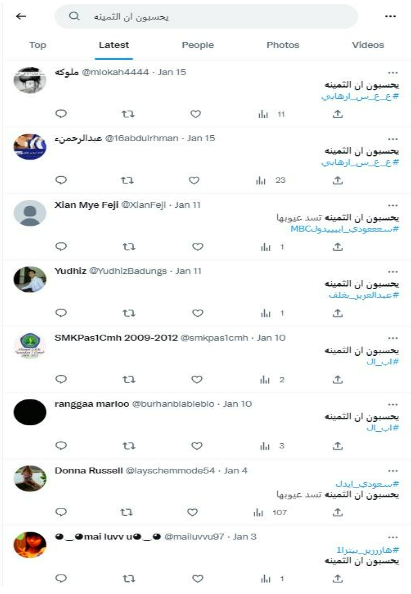

Despite the spread of incoherent tweets from bots, there were also clearly legible tweets that defended the Bahraini Government’s position by expressing support for the execution of the trio “Ain Seen Seen.”
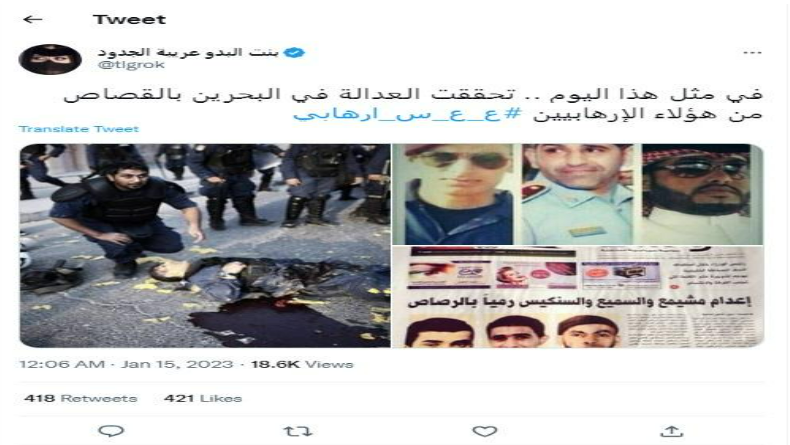
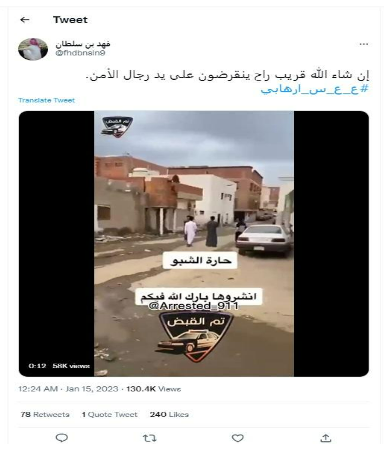

Some of the above accounts were Saudi, with an avatar depicting the Saudi Crown Prince, Mohammed bin Salman, such as @fhdbnsln9. Others used Twitter Blue and received verification, such as the account of @tlgrok “Daughter of Bedouins and Arab Ancestors”, which had a link to the official Bahrain News Agency in the bio, as did @haniii31.
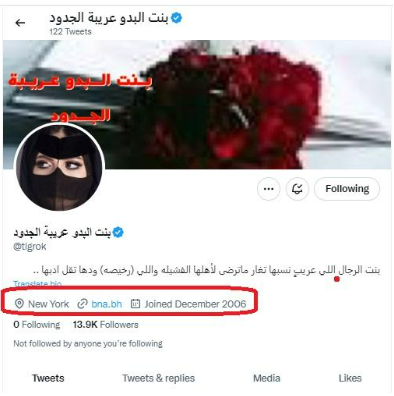
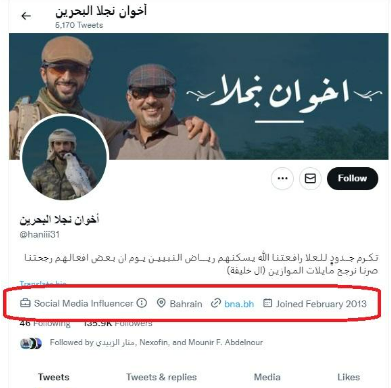
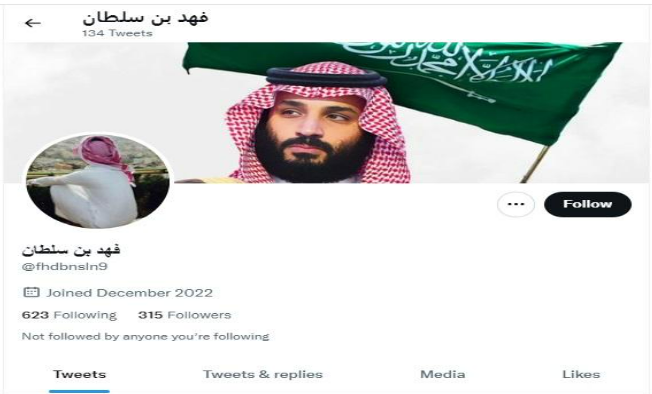
In summary
- Automated bots were used to promote the hashtags that are the subject of this analysis.
- Deploying methods to distract from original hashtags by launching similar ones.
- The participation of Non-Bahraini accounts from Iran, Saudi Arabia, Iraq, Lebanon and Syria in these hashtags.
- Repetitive content to increase activity on these hashtags and push it up the trending topics list.
Used Tools
InVID Verification Plugin
Twitter Search
Tweetdeck
Gephi
Hoaxy
